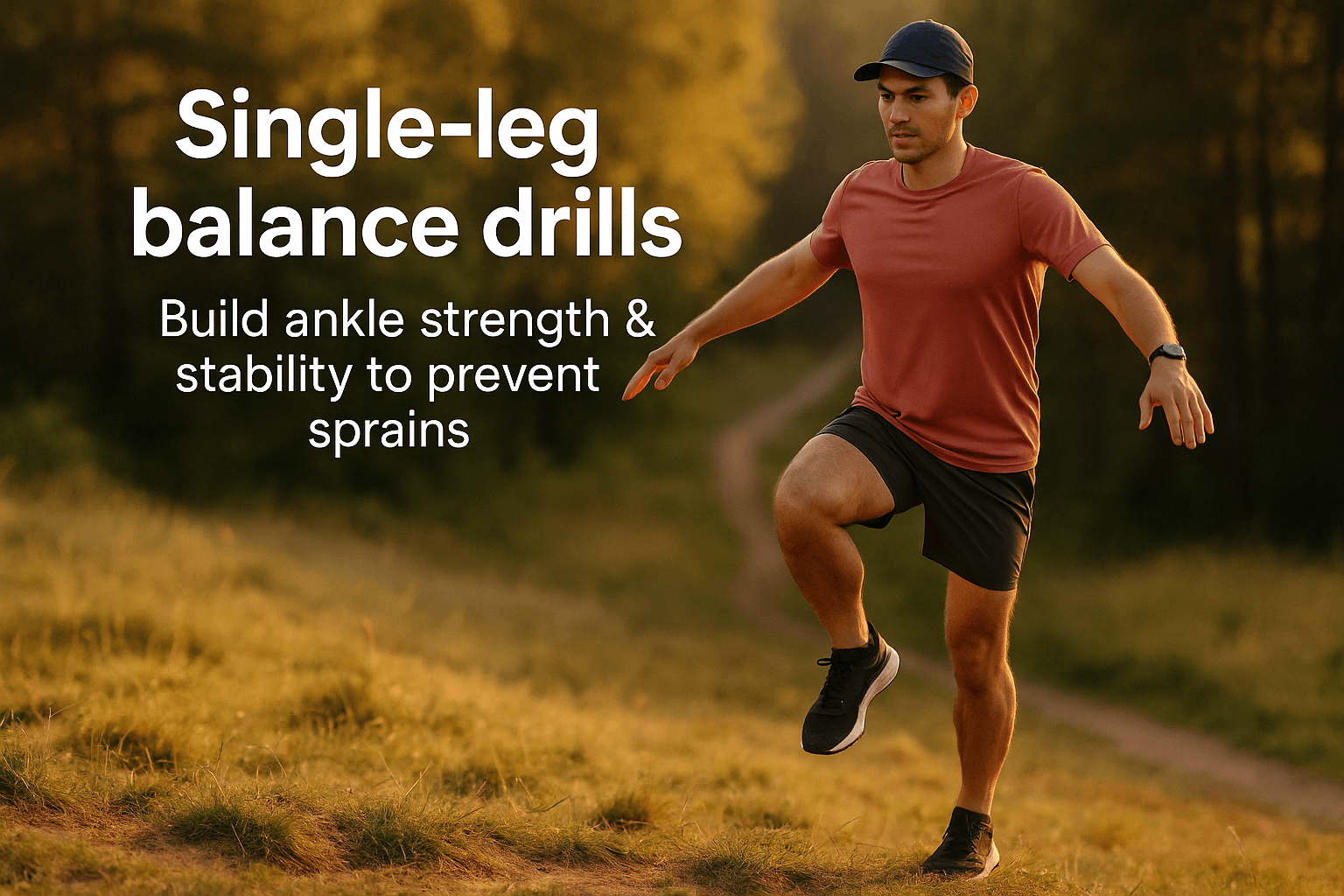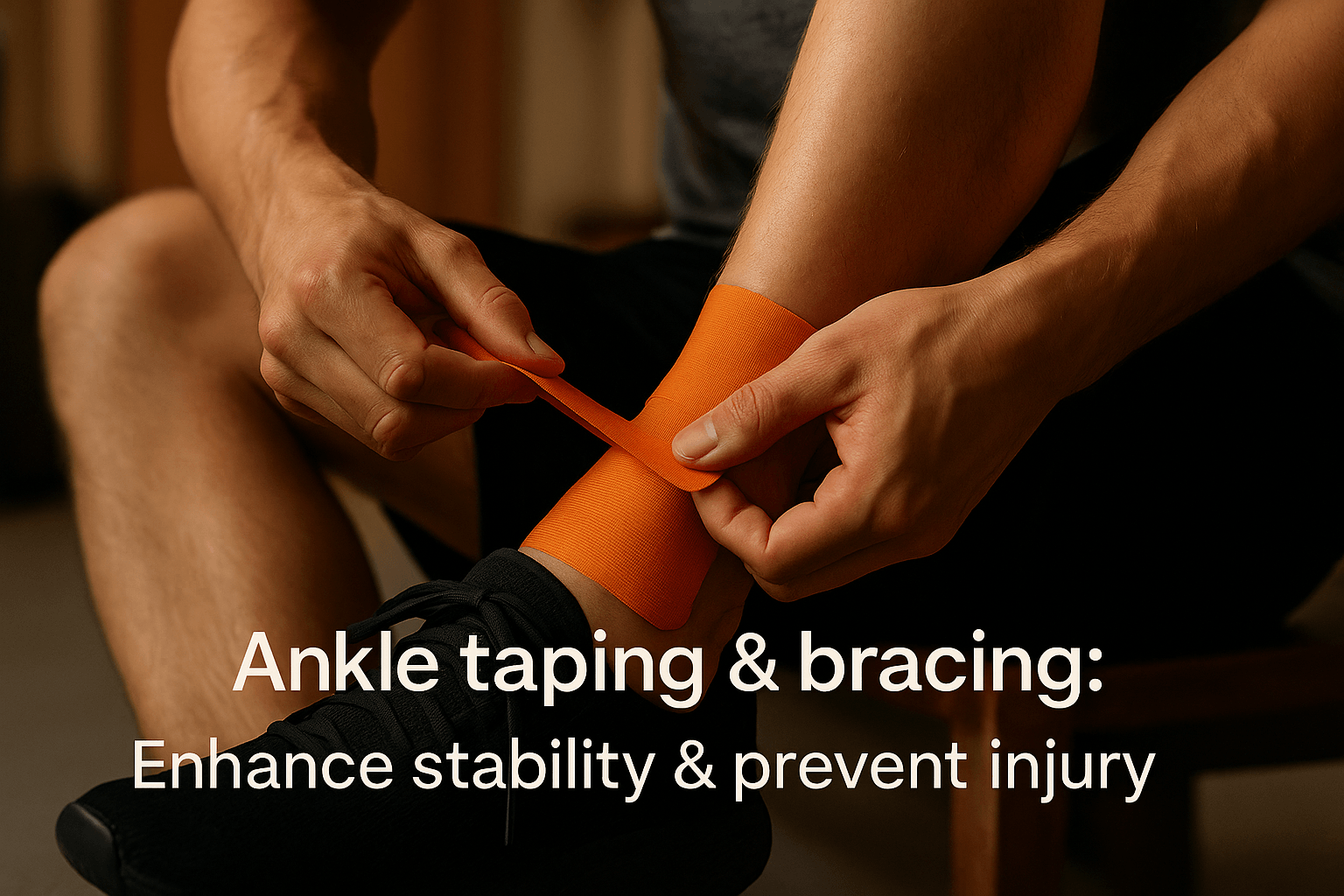Ankle sprains suck.
If you’ve been running for any length of time, you know they’re just part of the deal.
One minute, you’re cruising along, and then bam—you’re down, wondering how you managed to roll your ankle again.
I’ve been there more times than I care to admit. But here’s the thing—it doesn’t have to be your story forever.
Whether you’re running trails, playing basketball, or just walking up stairs, your ankles don’t have to hold you back.
Over the years, I’ve learned some simple but powerful tricks to keep my ankles strong and injury-free. Let me share them with you.
How to Build Ankle Strength for Injury Prevention
Here’s the truth: bad balance just invites ankle sprains to show up.
I used to think balance drills were for newbies—I was wrong. Trust me, don’t skip this.
Want strong ankles?
Do this:
Single-leg Balance Drills:
- Stand on one leg.
- Hold it for 30 seconds.
- Want to make it harder? Close your eyes.
Single-leg Squats:
- Stand on one leg.
- Lower yourself like you’re sitting back in a chair.
- Push back up to standing.
- Repeat 10-15 times per leg.
Ankle Rotations:
- Stand on one leg.
- Rotate your ankle clockwise for 10 reps.
- Switch to counterclockwise for 10 reps.
Calf Stretches:
- Stand facing a wall.
- Place your hands on the wall and step one foot back.
- Keep your back leg straight and heel on the floor.
- Hold for 30 seconds and switch legs.
Best Shoes for Ankle Support
Let’s be real—your running shoes aren’t for looking good. They’re for protecting your ankles.
Running in the wrong shoes? You’re gambling with your ankles. Think of your shoes as your foundation—treat them like it.
If you’re running on trails, get shoes with extra grip and solid ankle support to keep you stable on rocky, uneven ground.
Road shoes should prioritize cushioning because you’re hitting pavement, and you need something that absorbs impact and protects your joints.
Try Taping
Taping: It’s not just for safety—it actually works.
Proper taping isn’t just a “safety net”—it helps your brain understand where your ankle is in space. Once you get it right, you’ll wonder how you ever ran without it.
Coming back from an injury or doing a lot of side-to-side moves (like basketball)? A brace can make all the difference. It’s not a miracle worker, but it definitely gives you that extra security.
My advice?
Taping sounds easy—until you try it. It takes practice, and I’ve messed up enough tape jobs to know: it’s worth taking the time.
Don’t Skip Your Warm-Up
Skip warming up, and your body will remind you real quick why you shouldn’t.
I used to think warm-ups were for “other people”—you know, the ones who actually care about their bodies. Yeah, I was a fool.
Here’s what I do before I hit the pavement:
- Ankle Rotations: Stand on one leg and rotate your ankle in circles—clockwise, then counterclockwise. Get the blood flowing. Don’t skip this for both ankles.
- Calf Stretches: Tight calves are like a ticking time bomb. Loosen them up before you run, or your ankle’s going to feel wobbly as hell. Trust me, you don’t want that mid-run.
Watch Your Terrain
Look, if you’re running on rocky trails or playing sports on uneven ground, your ankles are eventually going to let you know they’re not happy.
If you can, stick to smooth, solid ground. It’s just safer, plain and simple. But hey, if you have to go off-road, just stay sharp.
Here’s what I’ve learned the hard way:
- Watch where you step: I know it’s easy to get lost in the run, but rocks, holes, and roots don’t care about your groove. Keep your eyes on the ground, or you’re going to pay for it.
- Downhill running: Downhill running feels great at first, right? But trust me, your ankles hate it. It’s tempting to go all out, but take it easy. Go too fast, and you’ll end up hobbling off the trail instead of enjoying the view.
- Take smaller steps: When you’re running on uneven terrain, take smaller, controlled steps. It’s tempting to stride out like you would on flat ground, but when the trail’s rocky, short, steady steps give you more control and help avoid twists and turns that could lead to injury.
Conclusion:
Preventing ankle sprains doesn’t take magic—just smart choices. Strengthen your ankles, wear the right shoes, listen to your body, and keep it real with your terrain.
It’s all about consistency.
Every time you dodge an injury, consider it a win. Seriously, every run without an injury is a small victory.
Don’t take that for granted.
Your ankles are your ticket to staying injury-free, so take care of them, and they’ll keep you running longer, faster, and with less pain.
Thank you for stopping by.
David D.
Quick Tips for Preventing Ankle Sprains
- Strengthen your ankles with simple drills
- Pick shoes that match your running surface
- Use tape or a brace for extra ankle support


